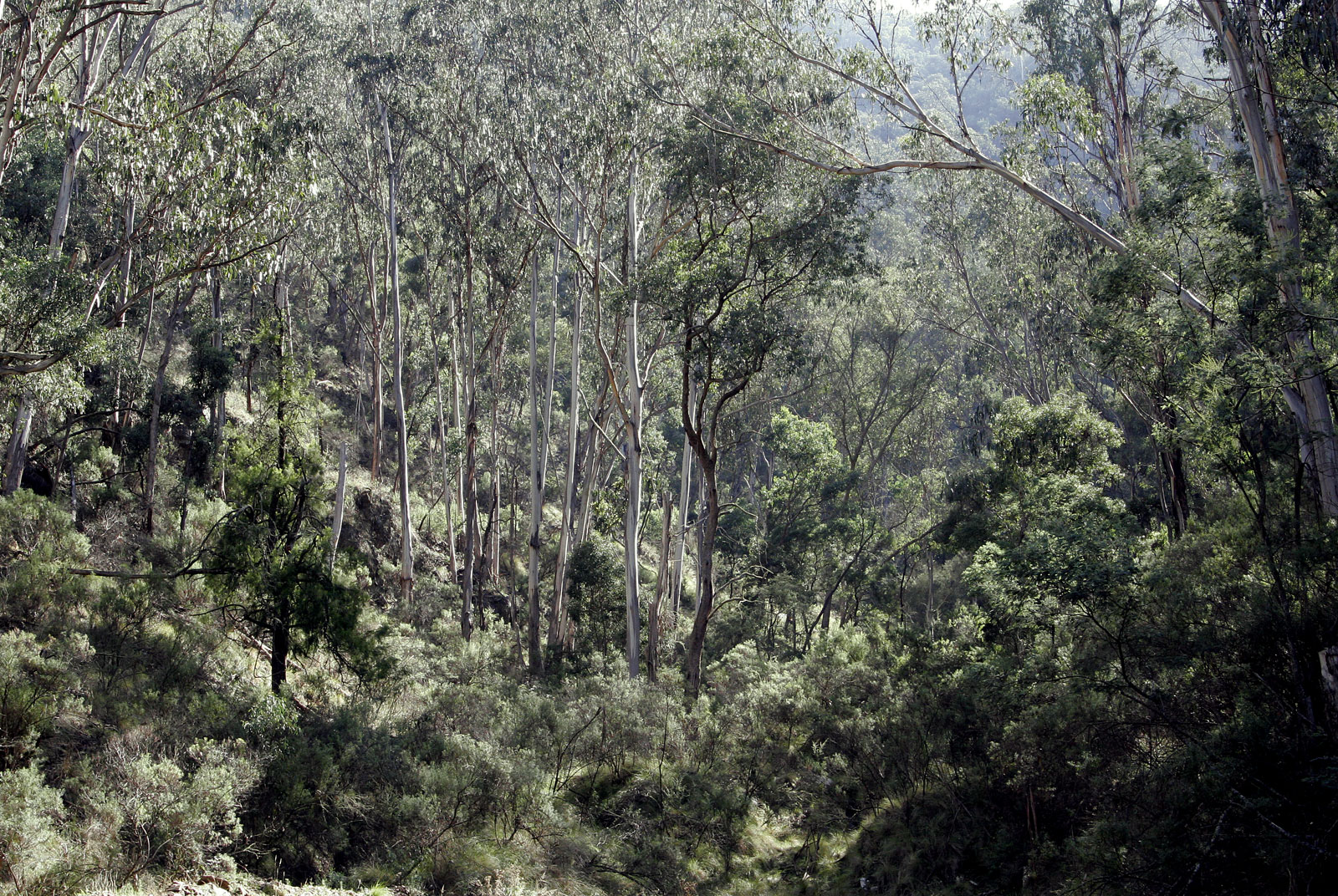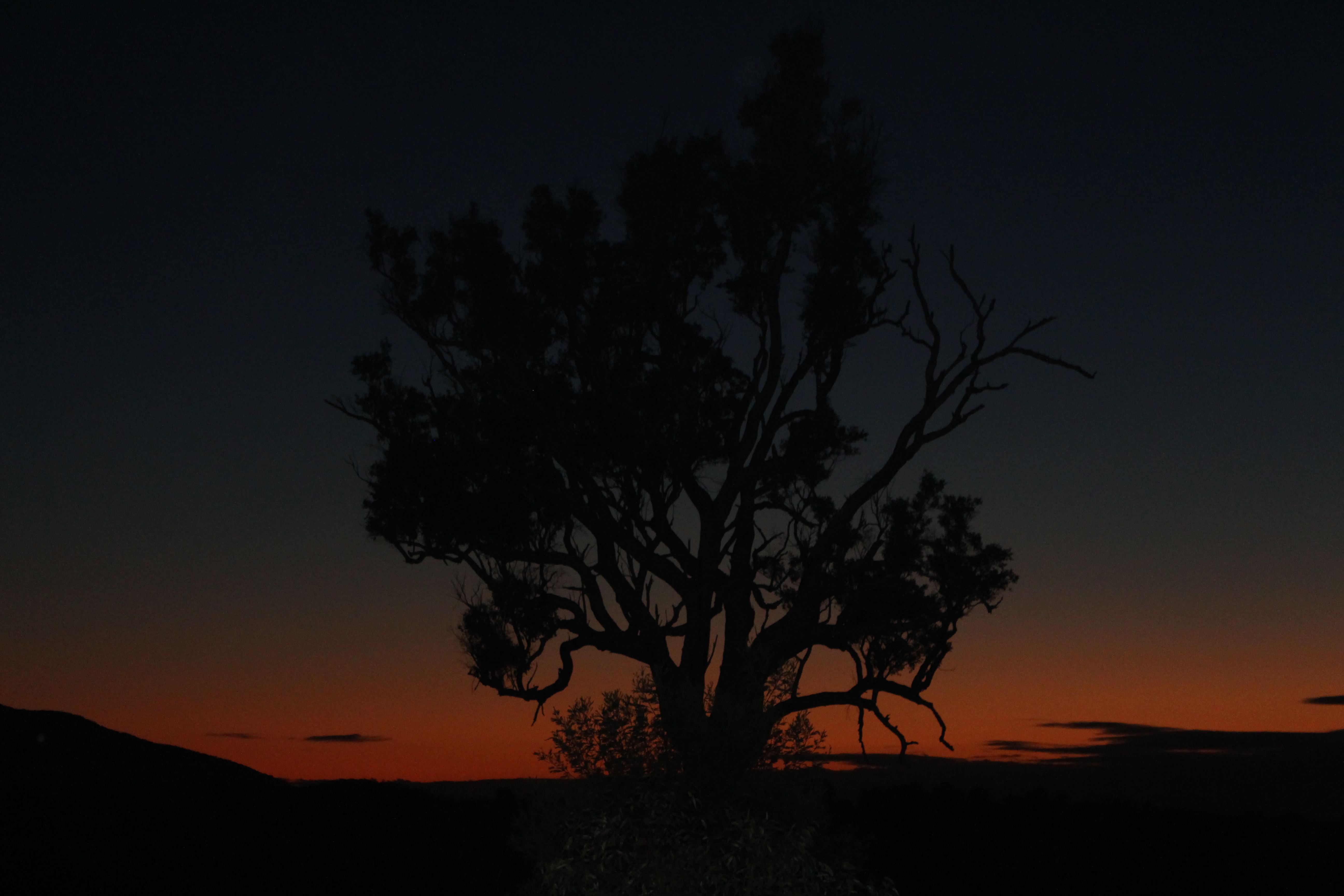|
Eucalyptus Angustissima
''Eucalyptus angustissima'', or narrow-leaved mallee, is a small tree that is native to the south of Western Australia. Distribution is scattered in southern coastal and subcoastal areas. The tree is endemic to Western Australia. Description It is a mallee eucalyptus that grows from about 1 to 4 metres in height. The bark is smooth or matt, mottled grey and very white/grey or light grey-brown. Its juvenile leaves are 4.5 to 8 cm long and 0.3 to 0.4 cm wide The adult leaves are 7 to 11.5 cm long and very narrow (0.15 to 0.3 cm wide). The buds occur in clusters of up to 7 and are followed by creamy-white flowers that appear between August and January and hemispherical fruits 0.5 to 0.8 cm wide. The crown is often very dense and not immediately recognisable as a eucalypt. There are two recognised subspecies: * ''Eucalyptus angustissima'' subsp.''angustissima'' * ''Eucalyptus angustissima'' subsp. ''quaerenda'' Taxonomy First described by the botanist ... [...More Info...] [...Related Items...] OR: [Wikipedia] [Google] [Baidu] |
Ferdinand Von Mueller
Baron Sir Ferdinand Jacob Heinrich von Mueller, (german: Müller; 30 June 1825 – 10 October 1896) was a German-Australian physician, geographer, and most notably, a botanist. He was appointed government botanist for the then colony of Victoria (Australia) by Governor Charles La Trobe in 1853, and later director of the Royal Botanic Gardens, Melbourne. He also founded the National Herbarium of Victoria. He named many Australian plants. Early life Mueller was born at Rostock, in the Grand Duchy of Mecklenburg-Schwerin. After the early death of his parents, Frederick and Louisa, his grandparents gave him a good education in Tönning, Schleswig. Apprenticed to a chemist at the age of 15, he passed his pharmaceutical examinations and studied botany under Professor Ernst Ferdinand Nolte (1791–1875) at Kiel University. In 1847, he received his degree of Doctor of Philosophy from Kiel for a thesis on the plants of the southern regions of Schleswig. Mueller's sister Ber ... [...More Info...] [...Related Items...] OR: [Wikipedia] [Google] [Baidu] |
Telopea (journal)
''Telopea'' is a fully open-access, online, peer-reviewed Peer review is the evaluation of work by one or more people with similar competencies as the producers of the work ( peers). It functions as a form of self-regulation by qualified members of a profession within the relevant field. Peer revie ... scientific journal that rapidly publishes original research on plant systematics, with broad content that covers Australia and the Asia-Pacific region. The journal was established in 1975 and is published by the National Herbarium of New South Wales, Royal Botanic Gardens & Domain Trust. As from Volume 9, part 1, 2000, full text of papers is available electronically in pdf format. It is named for the genus ''Telopea'', commonly known as waratahs. The forerunner of ''Telopea'' was ''Contributions from the New South Wales National Herbarium'' which was first published in July 1939 as Volume 1(1). Publication was suspended between 1941 and resumed in 1948 with the publicatio ... [...More Info...] [...Related Items...] OR: [Wikipedia] [Google] [Baidu] |
Myrtales Of Australia
The Myrtales are an order of flowering plants placed as a sister to the eurosids II clade as of the publishing of the ''Eucalyptus grandis'' genome in June 2014. The APG III system of classification for angiosperms still places it within the eurosids. This finding is corroborated by the placement of the Myrtales in the Malvid clade by the One Thousand Plant Transcriptomes Initiative. The following families are included as of APGIII: * Alzateaceae S. A. Graham * Combretaceae R. Br. ( leadwood family) * Crypteroniaceae A. DC. * Lythraceae J. St.-Hil. ( loosestrife and pomegranate family) * Melastomataceae Juss. (including Memecylaceae DC.) * Myrtaceae Juss. (myrtle family; including Heteropyxidaceae Engl. & Gilg, Psiloxylaceae Croizat) * Onagraceae Juss. ( evening primrose and Fuchsia family) * Penaeaceae Sweet ex Guill. (including Oliniaceae Arn., Rhynchocalycaceae L. A. S. Johnson & B. G. Briggs) * Vochysiaceae A. St.-Hil. The Cronquist system gives essentially the same c ... [...More Info...] [...Related Items...] OR: [Wikipedia] [Google] [Baidu] |
Eucalyptus
''Eucalyptus'' () is a genus of over seven hundred species of Flowering plant, flowering trees, shrubs or Mallee (habit), mallees in the Myrtaceae, myrtle Family (biology), family, Myrtaceae. Along with several other genera in the Tribe (biology), tribe Eucalypteae, including ''Corymbia'', they are commonly known as eucalypts. Plants in the genus ''Eucalyptus'' have bark that is either smooth, fibrous, hard or stringy, leaves with oil Gland (botany), glands, and sepals and petals that are fused to form a "cap" or Operculum (botany), operculum over the stamens. The fruit is a woody Capsule (botany), capsule commonly referred to as a "gumnut". Most species of ''Eucalyptus'' are Indigenous (ecology), native to Australia, and every state and territory has representative species. About three-quarters of Australian forests are eucalypt forests. Wildfire is a feature of the Australian landscape and many eucalypt species are adapted to fire, and resprout after fire or have seeds which sur ... [...More Info...] [...Related Items...] OR: [Wikipedia] [Google] [Baidu] |
Trees Of Australia
The flora of Australia comprises a vast assemblage of plant species estimated to over 30,000 vascular and 14,000 non-vascular plants, 250,000 species of fungi and over 3,000 lichens. The flora has strong affinities with the flora of Gondwana, and below the family level has a highly endemic angiosperm flora whose diversity was shaped by the effects of continental drift and climate change since the Cretaceous. Prominent features of the Australian flora are adaptations to aridity and fire which include scleromorphy and serotiny. These adaptations are common in species from the large and well-known families Proteaceae (''Banksia''), Myrtaceae (''Eucalyptus'' - gum trees), and Fabaceae (''Acacia'' - wattle). The arrival of humans around 50,000 years ago and the settlement by Europeans from 1788, has had a significant impact on the flora. The use of fire-stick farming by Aboriginal people led to significant changes in the distribution of plant species over time, and the large ... [...More Info...] [...Related Items...] OR: [Wikipedia] [Google] [Baidu] |
Eucalypts Of Western Australia
Eucalypt is a descriptive name for woody plants with capsule fruiting bodies belonging to seven closely related genera (of the tribe Eucalypteae) found across Australasia: ''Eucalyptus'', ''Corymbia'', ''Angophora'', '' Stockwellia'', '' Allosyncarpia'', '' Eucalyptopsis'' and ''Arillastrum''. Taxonomy For an example of changing historical perspectives, in 1991, largely genetic evidence indicated that some prominent ''Eucalyptus'' species were actually more closely related to ''Angophora'' than to other eucalypts; they were accordingly split off into the new genus ''Corymbia''. Although separate, all of these genera and their species are allied and it remains the standard to refer to the members of all seven genera ''Angophora'', ''Corymbia'', ''Eucalyptus'', ''Stockwellia'', ''Allosyncarpia'', ''Eucalyptopsis'' and ''Arillastrum'' as "eucalypts" or as the eucalypt group. The extant genera ''Stockwellia'', ''Allosyncarpia'', ''Eucalyptopsis'' and ''Arillastrum'' comprise six ... [...More Info...] [...Related Items...] OR: [Wikipedia] [Google] [Baidu] |
List Of Eucalyptus Species
The following is an alphabetical list of ''Eucalyptus'' species accepted by the Australian Plant Census as at February 2019. Several species only occurring outside Australia, including '' E. orophila'', '' E. urophylla'' and '' E. wetarensis'' are listed at the World Checklist of Selected Plant Families. A * '' Eucalyptus abdita'' Brooker & Hopper * ''Eucalyptus absita'' Grayling & Brooker – Badgingarra box * '' Eucalyptus acaciiformis'' H.Deane & Maiden – wattle-leaved peppermint * ''Eucalyptus accedens'' W.Fitzg. – powderbark wandoo * '' Eucalyptus acies'' Brooker – Woolburnup mallee * ''Eucalyptus acmenoides'' Schauer in W.G.Walpers – white mahogany * '' Eucalyptus acroleuca'' L.A.S.Johnson & K.D.Hill – Lakefield coolibah * '' Eucalyptus adesmophloia'' (Brooker & Hopper) D.Nicolle & M.E.French * '' Eucalyptus aequioperta'' Brooker & Hopper – Welcome Hill gum * ''Eucalyptus agglomerata'' Maiden – blue-leaved stringybark * ''Eucalyptus aggregata'' H.Deane & Ma ... [...More Info...] [...Related Items...] OR: [Wikipedia] [Google] [Baidu] |
Lake Chinocup Lake Chinocup, sometimes referred to as Chinocup Lake, is a salt lake in the Great Southern region of Western Australia located in the Shire of Kent between the towns of Nyabing and Pingrup and about north of the location of Chinocup. The location takes its name from the lake; the name is an Aboriginal word of unknown meaning. The lake was named in 1879. The lake is one of many in the Chinocup Lake system that runs in a north to south direction between Pingrup and Lake Grace and are part of an ancient river system. Some of the lakes are pink in colour as a result of the presence of Halobacterium. The lake occupies an area of and makes up part of the Lake Chinocup Reserve, which has a total area of . The catchment area of the lake is , made up of Lake Chinocup Reserve, Lake Magenta Reserve (approximately ) and surrounding farmland. The lake system is part of the Lockhart River catchment, which is part of the even larger Avon River basin. The Pingrup River, also part o ... [...More Info...] |




